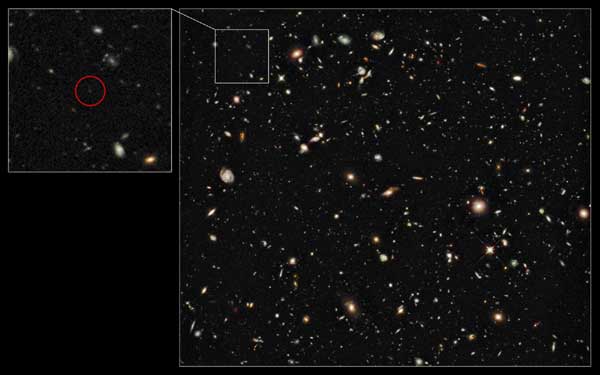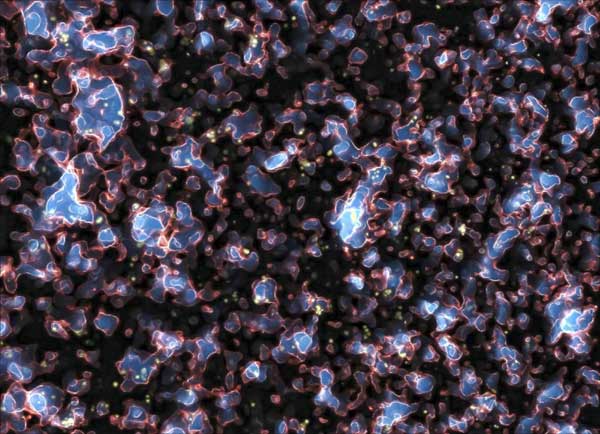Science and Health
Astronomers find oldest galaxy yet
(Agencies)
Updated: 2010-10-21 17:11
 |
Large Medium Small |

| This image shows the infrared Hubble Ultra Deep Field taken by the NASA/ESA Hubble Space Telescope in 2009, in which several robust candidate distance-record-breaking objects were discovered. Confirming the distances to such faint and remote objects is however an enormous challenge and can only reliably be done using spectroscopy from very large ground-based telescopes by measuring the redshift of the galaxy's light. Astronomers using ESO's Very Large Telescope (VLT) have measured the distance to the most remote galaxy so far, UDFy-38135539, existing when the Universe was only about 600 million years old (a redshift of 8.6). At this early time, the Universe was not fully transparent and much of it was filled with a hydrogen fog that absorbed the fierce ultraviolet light from young galaxies. Astronomers have spotted the oldest galaxy ever seen, one born just 600 million years after the Big Bang. Their report, published in the journal Nature on Oct 20, 2010, confirms that the distant smudge first spotted by the orbiting Hubble Space Telescope is the farthest and thus oldest object ever imaged. [Photo/Agencies] |
WASHINGTON - Astronomers have spotted the oldest galaxy ever seen, one born just 600 million years after the Big Bang.
Their report, published in the journal Nature on Wednesday, confirms that the distant smudge first spotted by the orbiting Hubble Space Telescope is the farthest and thus oldest object ever imaged.
The galaxy has the unglamorous name of UDFy-38135539, the team of European researchers said.
"Here we report the detection of ... photons emitted less than 600 million years after the Big Bang," they wrote.
Light travels at a speed of 186,000 miles (300,000 km) a second, or about 6 trillion miles (10 trillion km) a year. Astronomers can use light-speed as a kind of time machine, and seeing light emitted from objects very far away shows them as they were in the past.
In this case, the galaxy's light first started traveling 13 billion years ago, right after the Big Bang.
The distance is measured using what is called red shift, a kind of Doppler effect of light. Just as a train's whistle seems to change in pitch as the train approaches and passes, light's color also shifts.
This galaxy has a red shift of 8.55, making it the farthest and oldest ever seen.
At this time in the early universe, a haze of hydrogen gas was everywhere, but radiation from primeval galaxies was causing a process called ionization that changed the nature of the hydrogen.
The report "represents a fundamental leap forward in observational cosmology", Michele Trenti of the University of Colorado, Boulder, wrote in a commentary.

| This illustration shows the transitional period when the fog was still being cleared by this ultraviolet light is known as the era of reionisation, illustrated with this still from a representative scientific simulation, released to Reuters, Oct 20, 2010. [Photo/Agencies] |